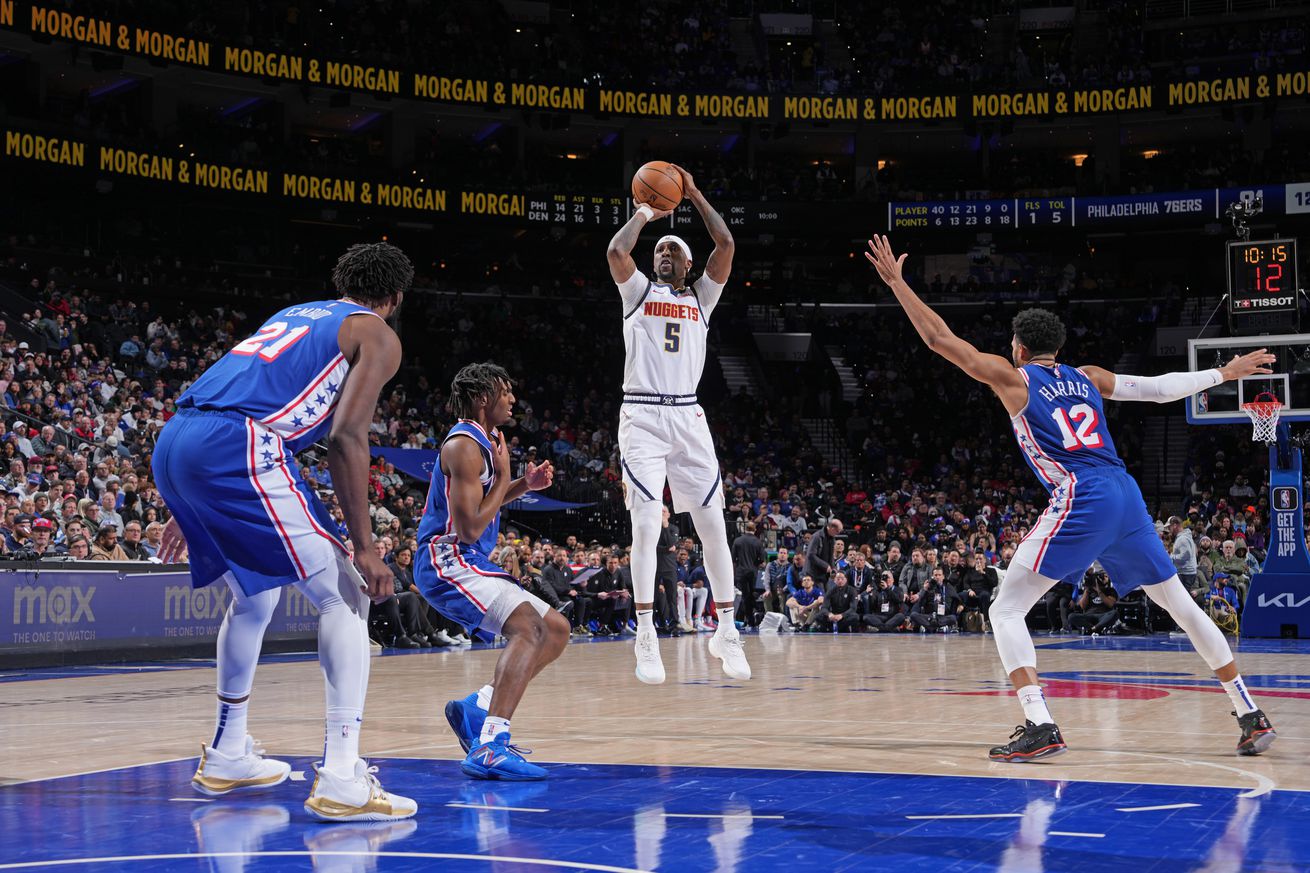
Had the Sixers not landed Paul George, they still could have put together an impressive supporting cast alongside Joel Embiid and Tyrese Maxey.
In January, some idiot on LibertyBallers.com wrote an article about why the Sixers shouldn’t pursue a third max player at the trade deadline or in free agency. (It was me. I’m the idiot.)
Luckily, the Sixers ignored that advice and landed Paul George, the biggest fish in the free-agent pond. They proceeded to round out their supporting cast by signing Caleb Martin, Andre Drummond, Eric Gordon, Reggie Jackson and Guerschon Yabusele and re-signing Kelly Oubre Jr., Kyle Lowry and KJ Martin.
In my defense, I did say the Sixers could make an exception to the no-three-max rule if the player was a “picture-perfect fit alongside Joel Embiid and Tyrese Maxey.” We’ve yet to see George on the court with those two, but based on archetype alone, he does seem to fit that bill. My bigger concern was how the NBA’s new collective bargaining agreement would make it difficult for the Sixers to build and sustain a championship-caliber supporting cast if they had three max contracts.
To some extent, those concerns did materialize throughout the league. The Los Angeles Clippers specifically referenced “the constraints of the new CBA” in their statement about why they weren’t re-signing George. The Denver Nuggets (Kentavious Caldwell-Pope) and Golden State Warriors (Klay Thompson) also parted ways with key contributors for financial reasons. However, the floor largely fell out on the NBA’s middle class, which allowed the Sixers to snag Caleb Martin on a below-market deal. That was the variable I didn’t foresee in January.
With that said, the two-stars-and-depth model wouldn’t have been drawing dead, either. The Sixers could have assembled a potent roster that way as well.
With only Joel Embiid ($51.4 million), Jared McCain ($4.0 milliion), Ricky Council IV ($1.9 million), Tyrese Maxey’s cap hold ($13.0 million) and eight incomplete roster charges ($1.2 million each) on their books, the Sixers entered the offseason with the ability to create up to nearly $61 million in cap space. They might not have been able to assemble quite as much of a superteam without George, but they could have built a deep supporting cast alongside Embiid and Maxey.
The Sixers could have signed two of DeMar DeRozan ($23.4 million), Caldwell-Pope ($22.8 million), Malik Monk ($17.4 million) and Thompson ($15.9 million), and they still would have had plenty of money left over. They could have re-signed De’Anthony Melton ($12.8 million) or Buddy Hield ($8.8 million) and then rounded out their wing depth with Derrick Jones Jr. ($9.5 million), Naji Marshall ($8.6 million) or Saddiq Bey ($6.4 million), who’s recovering from an ACL tear.
That’s to say nothing of the guys who wound up settling for minimum contracts, including Tyus Jones, Gary Trent Jr., Delon Wright or Monte Morris. Hell, Lonnie Walker IV just took an Exhibit 10 deal with the Boston Celtics, while Markelle Fultz and Dennis Smith Jr. remain available on the free-agent market. There was a ton of value to be had this offseason.
Had the Sixers signed Caldwell-Pope, Derrick Jones Jr., Marshall and Melton, they still would have had $11.9 million in leftover cap space with eight players under contract. They could have split that remaining money between two or three of Tyus Jones, Wright, Trent and Morris, which would have given all of them a slight raise over what they ended up receiving. They also could have used some of it to sign Drummond instead.
The Sixers still would have maintained access to the room mid-level exception in this scenario, which they used to re-sign Oubre. Granted, there’s no guarantee that Oubre would have settled for that amount if the Sixers had more to spend on him, but they could have used the rest of their cap space on him and saved the room MLE for someone else.
However, the Sixers still would have a glaring lack of depth at power forward unless they signed Kyle Anderson, which was likely a non-starter given his lack of shooting. Rebounding might have been an even bigger issue than it already figures to be. They wouldn’t have nearly as much shooting, either. Marshall knocked down 38.7 percent of his three-pointers last season, but he was a 28.6 percent shooter from deep over his first three seasons. Jones is a career 31.6 percent three-point shooter on low volume, too.
There’s no guarantee that the Sixers would have been able to land all of these players on the contracts that they wound up signing, either. Would Tyus Jones still take a minimum or near-min deal if he was starting behind Maxey rather than filling a clear hole in Phoenix? Would Marshall accept being a backup behind Oubre? Would Wright embrace being a third-stringer, even if it meant a slightly higher payday?
The best-case scenario might have been a depth chart that looked like this:
PG: Maxey/T. Jones/McCain
SG: KCP/Melton/Wright
SF: Oubre/Marshall/RC4
PF: D. Jones Jr./Martin/Yabusele
C: Embiid/Drummond/Bona
Is that better than what the Sixers are going into the 2024-25 season with? It’s hard to argue that.
Had the floor not fallen out on the NBA’s middle class, there might have been a bigger disparity between the Big Three model and the two-stars-and-depth approach. If the Sixers didn’t land Caleb Martin on a discount deal and Lowry, Gordon and Jackson were able to fetch more than minimum deals, the vibes around this offseason could have been much worse. Luckily, the market broke in the Sixers’ favor, and they took advantage accordingly.
And that is why Daryl Morey is the president of the Sixers while I am but a simple blog boi.
Unless otherwise noted, all stats via NBA.com, PBPStats, Cleaning the Glass or Basketball Reference. All salary information via Salary Swish and salary-cap information via RealGM.
